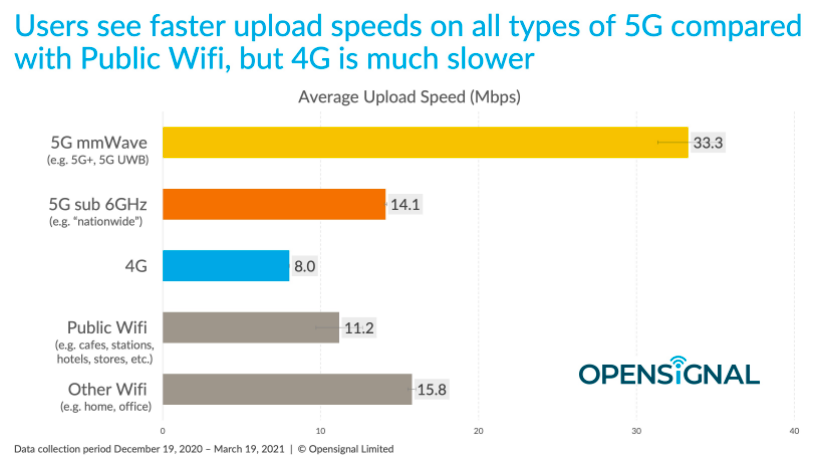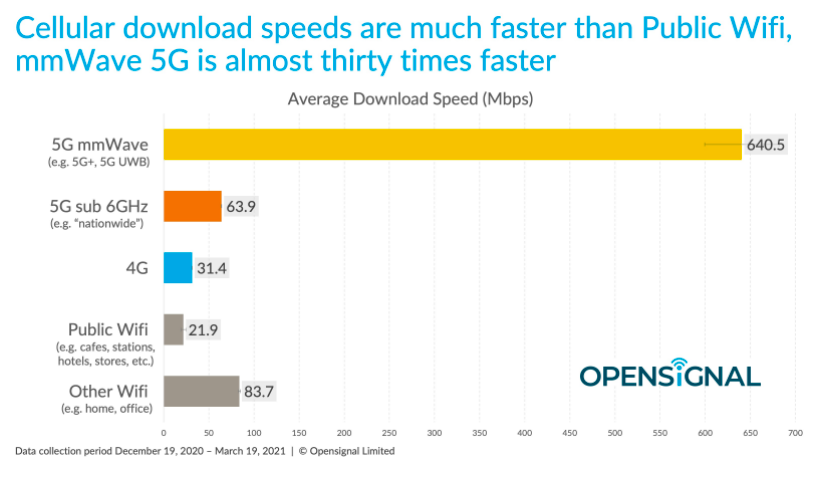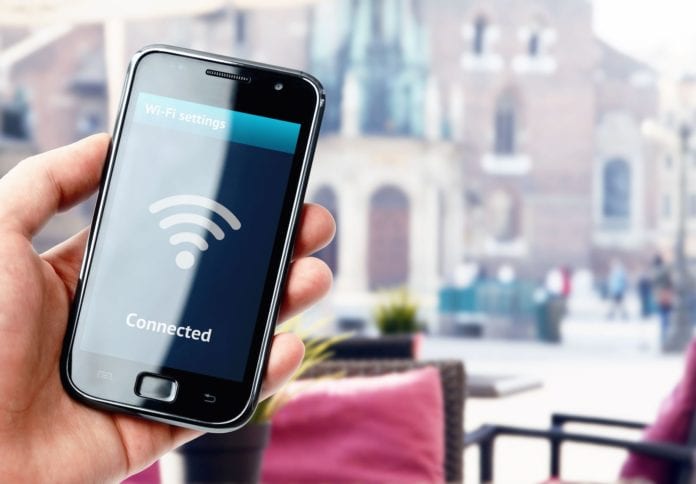Data shows that mmWave 5G is nearly thirty times faster than public Wi-Fi
According to recent Opensignal data, 5G mmWave and public Wi-Fi are nearly matched in availability. However, smartphone users experienced download speeds 30 times faster when connected to 5G mmWave than when connected to public Wi-Fi, achieving an average upload speed of 640.5 Mbps.
The Opensignal statement, written by Opensignal’s Analysis Team Lead Ian Fogg, highlighted three explanations for why public Wi-Fi is so inferior to mmWave. The first is interference from competing signals, which is a result of Wi-Fi’s use of unlicensed spectrum that anyone can use. As a result, an area likely to be congested, like a café or transportation hub, will suffer from multiple Wi-Fi networks competing, in an unmanaged way, for the same wireless frequencies, creating interference.

In addition, public Wi-Fi can also be hindered by slow wired broadband foundations that were installed years prior and never upgraded, resulting in slower speeds for users.
Lastly, Opensignal stated that, because public Wi-Fi hotspots are offered for free, most of these Wi-Fi access points are not of particularly high quality. Inside a home, however, these access points will typically be upgraded by ISPs.
While not as impressive, 5G sub 6 GHz also proved to be faster than public Wi-Fi, with an average download speed of 31.4 Mbps and upload speed of 14.1 Mbps, compared to public Wi-Fi’s 21.9 Mbps and 11.2 Mbps, respectively. But even more validating than 5G’s dominance over public Wi-Fi, is the fact that 4G only achieved an average upload speed of 8.0 Mbps, demonstrating 5G’s superiority over the previous generation of cellular.

Fogg stated that Wi-Fi will continue to have value in the home, at offices and in public spaces, the firm also stated that it will increasingly be seen as a complement to cellular services, but not because of the speeds it can offer. Instead, Wi-Fi will be considered “the free or cheap option” of the option that has better device support over those that “lack the necessary cellular hardware.”
“Device makers that include 5G cellular connectivity […] can lift many more users out of the public Wi-Fi slow lane,” wrote Fogg.

